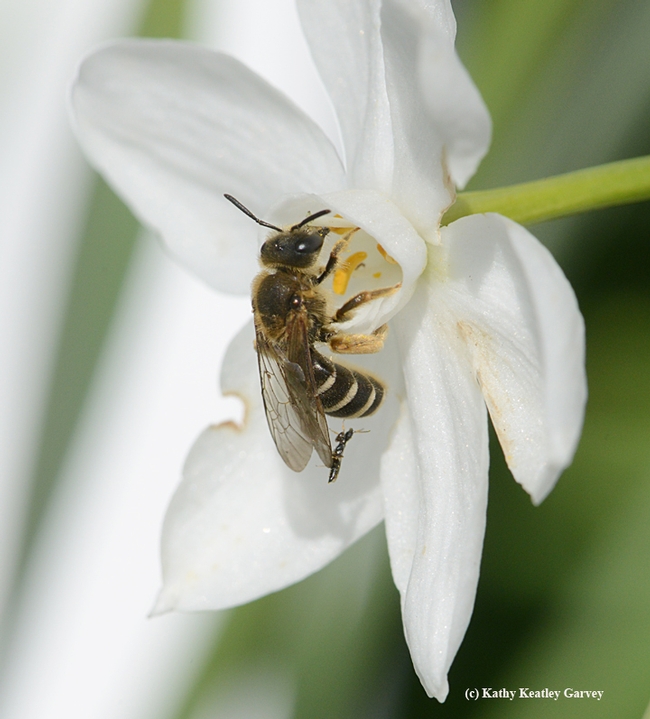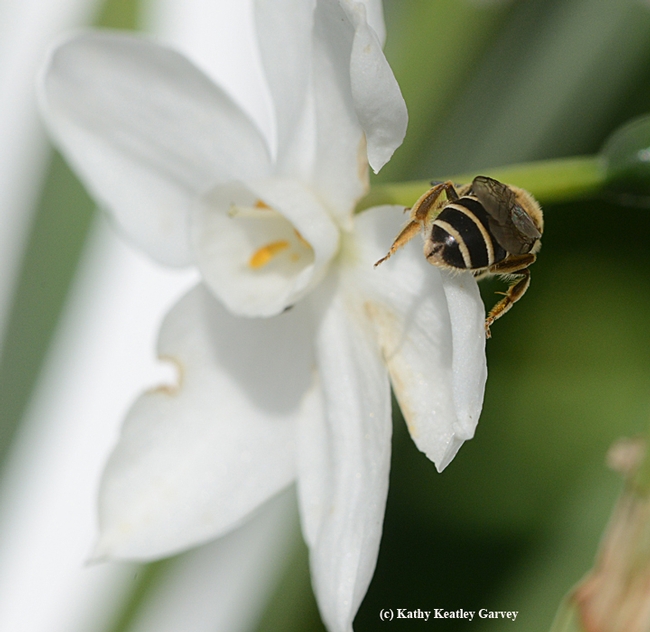Honey bees aren't the only bees out foraging.
We saw our first native bee of the season on Jan. 25 at the Benicia Capitol State Historic Park.
Native pollinator specialist Robbin Thorp, distinguished emeritus professor of entomology at the UC Davis Department of Entomology and Nematology, identified it as a female sweat bee, Halictus rubicundus.
"The head shape, lack of long curled hairs below at the base of the hind leg, and the bent basal vein in the wing" helped him identify it as a Halictus. The lack of facial foveae confirmed it was not an Andrena.
"Nice early record for this species," added Thorp, who is the co-author of California Bees and Blooms: A Guide for Gardeners and Naturalists (Heydey) and Bumble Bees of North America: An Identification Guide (Princeton University Press.)
Halicutus rubicundus is found in Europe, northern Asia, and across the United States and Canada, according to the book, The Bees in Your Backyard, A Guide to North America's Bees, by Joseph S. Wilson, assistant professor of biology at Utah State University, and Olivia J. Messinger Carril, who received her doctorate in plant biology from Southern Illinois University and "has been studying bees and wasps for more than a decade," according to the publisher, Princeton University Press.
You can see more images of this sweat bee on BugGuide.Net.
So, one sweat bee down. Hundreds more to go as the seasons unfold.
Attached Images:

Female sweat bee, Halictus rubicundus, foraging Jan. 25 at the Benicia Capitol State Park. Note the tiny wasp, which appears to be a bethylid.(Photo by Kathy Keatley Garvey)

The head of the sweat bee,Halictus rubicundus. (Photo by Kathy Keatley Garvey)

The female sweat bee, Halictus rubicundus, prepars for take-off. (Photo by Kathy Keatley Garvey)